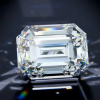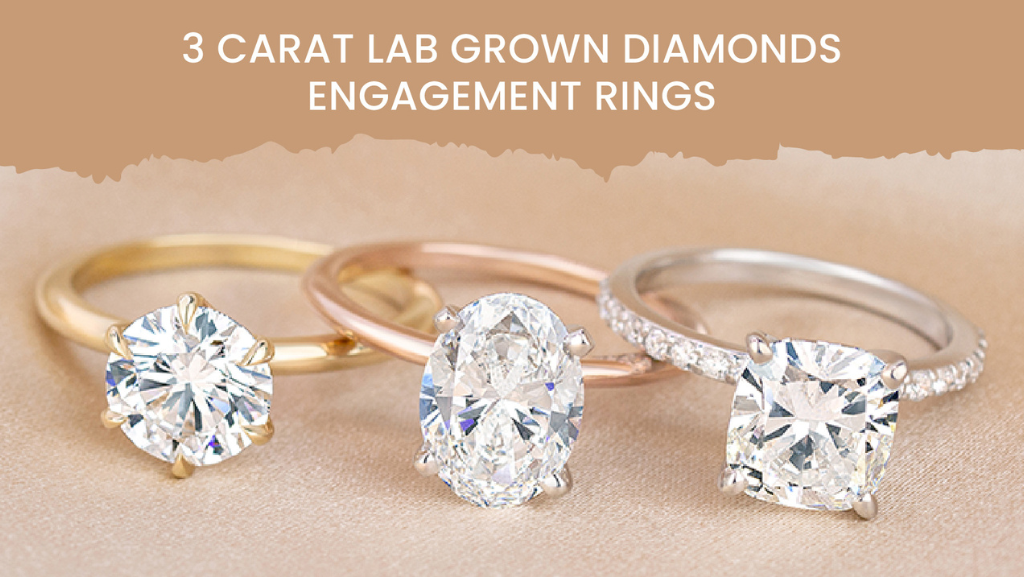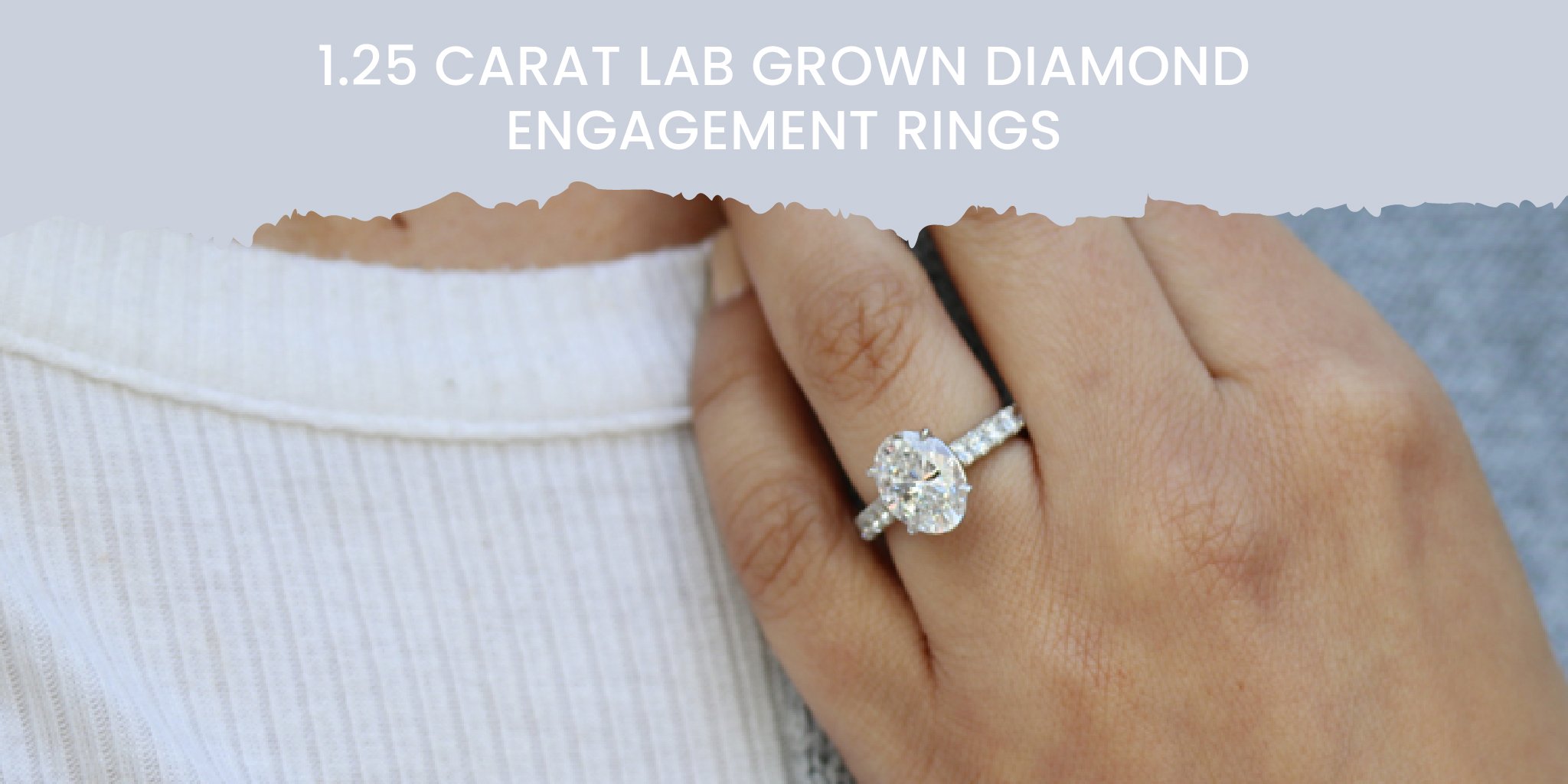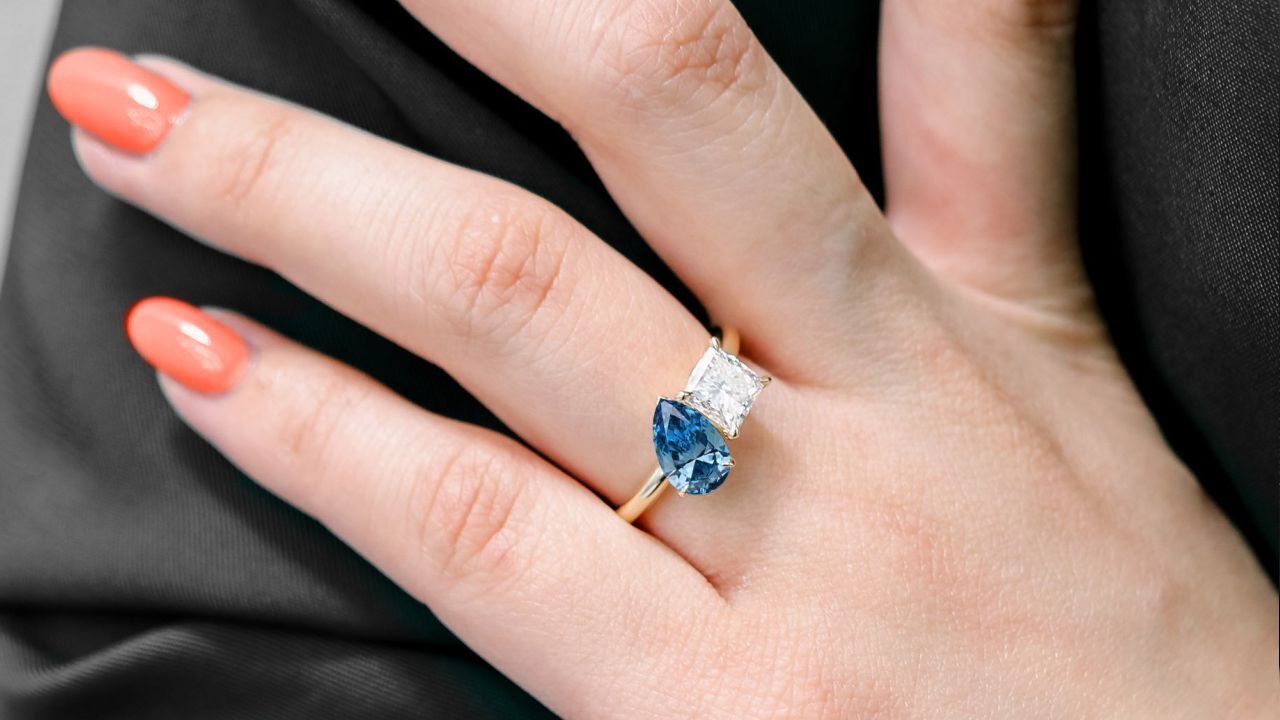Different Types of Lab Grown Diamonds: A Complete Guide
What are the Lab Grown Diamonds?
Lab grown diamonds have many names such as lab created diamonds, synthetic diamonds, man-made diamonds, cultured diamonds or engineered diamonds. In short, they are also called lab diamonds and have a powerful hold on the diamond market at present. So, what are lab grown diamonds exactly?
These gems share virtually identical optical and physical characteristics with their mined counterparts. They offer a more sustainable, cost-effective, and ethically sound alternative to natural diamonds.
Instead of the natural geological processes that span millions of years beneath the Earth’s crust, lab grown diamonds are carefully created in controlled laboratory settings in just a matter of weeks or months.
Remarkably, these lab grown diamonds are available at prices approximately 40% lower than those of their mined counterparts.
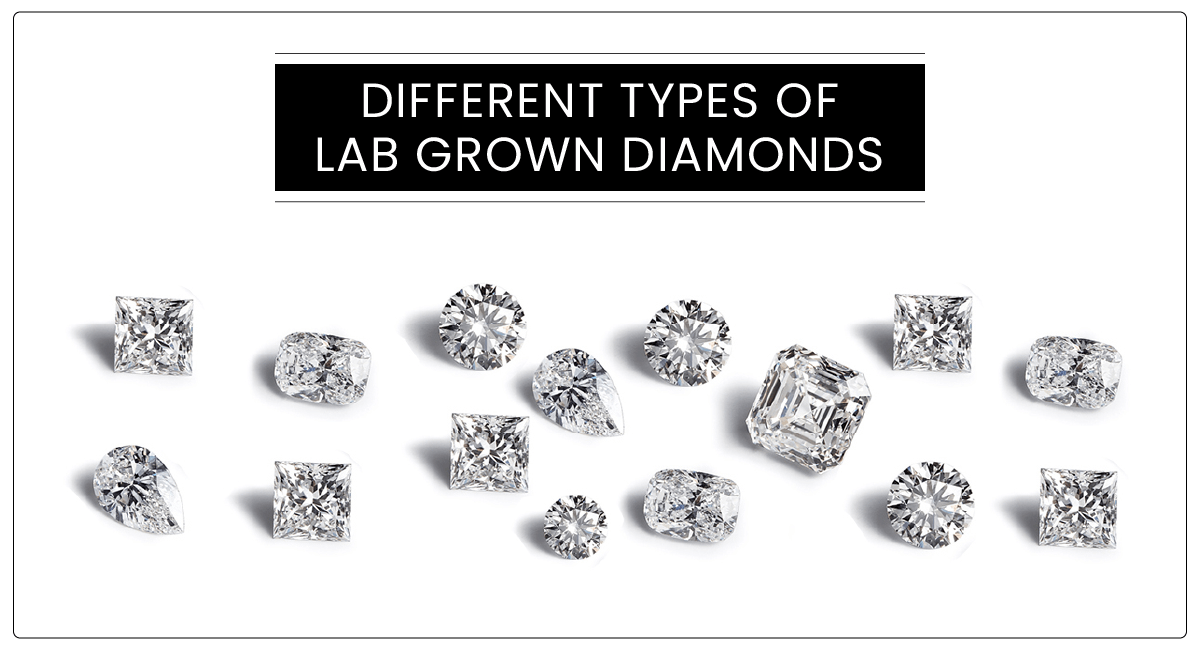
Ever since HPHT synthetic diamonds and CVD diamonds came into existence, they have given natural diamonds good competition. A diverse range of synthetic diamonds is readily available in the market, and if you’re considering the purchase of these loose diamonds, it’s essential to have a comprehensive understanding of the different types of lab grown diamonds.
The key reason man-made diamonds have created such a massive impact on the diamond market is due to their easy availability and cheap prices (in comparison to natural diamonds). The innovators in the field of synthetic diamonds have elevated their capabilities and can now craft Type IIA diamonds through manual processes.
Just to provide some context, Type IIA diamonds represent the upper echelon of diamond quality, with examples like the Koh-i-Noor and Cullinan diamonds standing as prime illustrations.
You can easily calculate the cost of lab grown diamonds using our user-friendly “lab grown diamond price calculator” tool, available on our dedicated page.
Now to help you distinguish between the different types of lab grown diamonds, we have mentioned all the types of man-made diamonds below. Along with details to answer your question of “how are lab grown diamonds made?”
Types of Lab Created Diamonds
Curious about the various categories of synthetic diamonds? Let’s delve into them. Lab-grown diamonds can be categorized into two primary types. Let’s explore both of these major categories in depth.
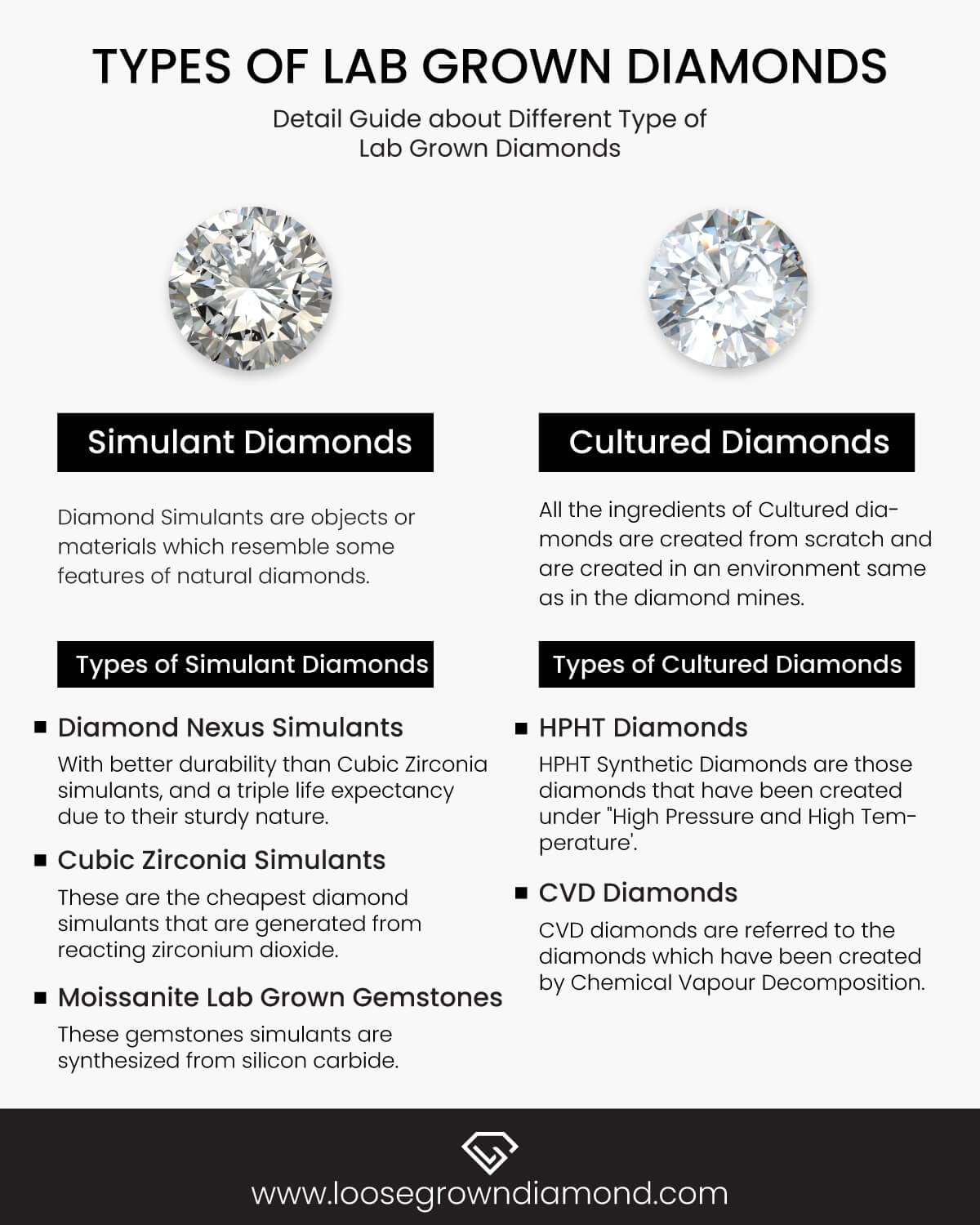
1. Simulant Diamonds
Diamond Simulants are objects or materials which resemble some features of natural diamonds, they look similar but they are not exactly pure diamonds. The difference between a diamond simulant, a natural diamond, and a man-made diamond cannot be seen by the naked eye, but rather by specialized types of equipment.
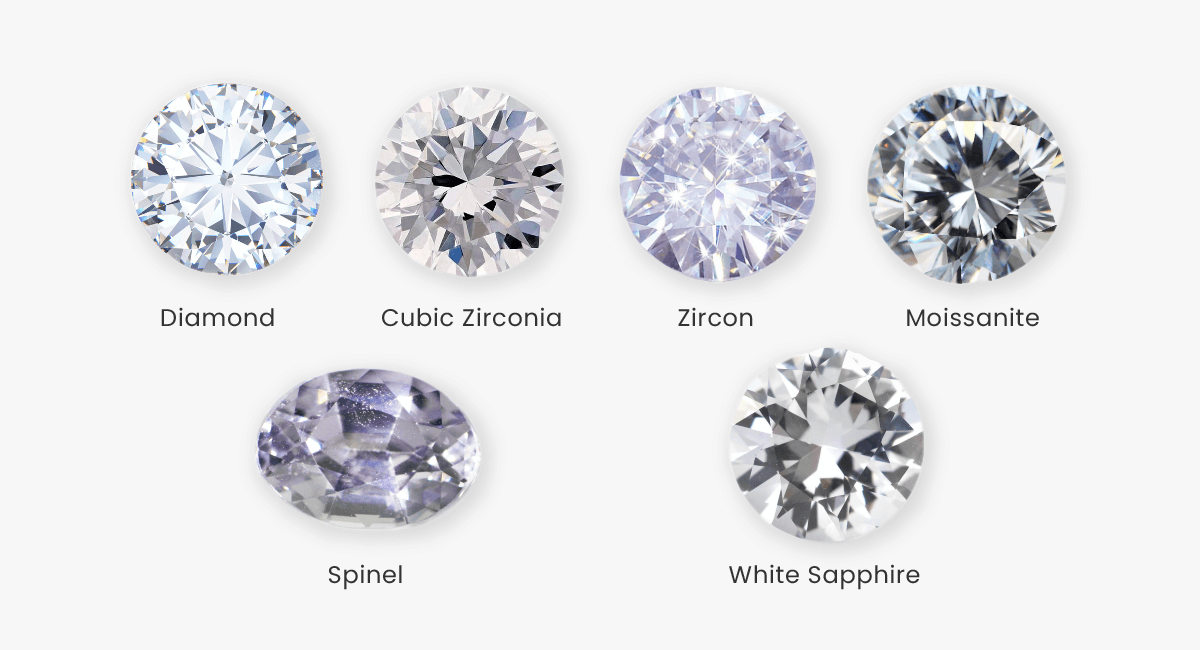
Diamond simulants have different chemical, physical, and optical properties in comparison to natural diamonds. A diamond simulant only possesses the same gemological characteristics as that of a natural diamond. These diamonds are also referred to as diamond imitations and are fabricated from alternative materials.
Diamond simulants exhibit distinct chemical, physical, and optical attributes that set them apart from natural diamonds. While they mimic the gemological characteristics of natural diamonds, they are commonly known as diamond imitations and are crafted from alternative materials.
Examples of diamond simulants include cubic zirconia and moissanite, both of which bear a striking resemblance to natural diamonds but do not possess genuine diamond crystal structures.
These diamond imitations were introduced in the latter part of the 20th century as alternative options to natural diamonds.
There are three distinct categories of simulant diamonds:
Cubic Zirconia Simulants: Cubic Zirconia Simulants, the most cost-effective option, are crafted by processing zirconium dioxide. While they share a visual similarity with diamond crystals, they do not possess the same level of durability.
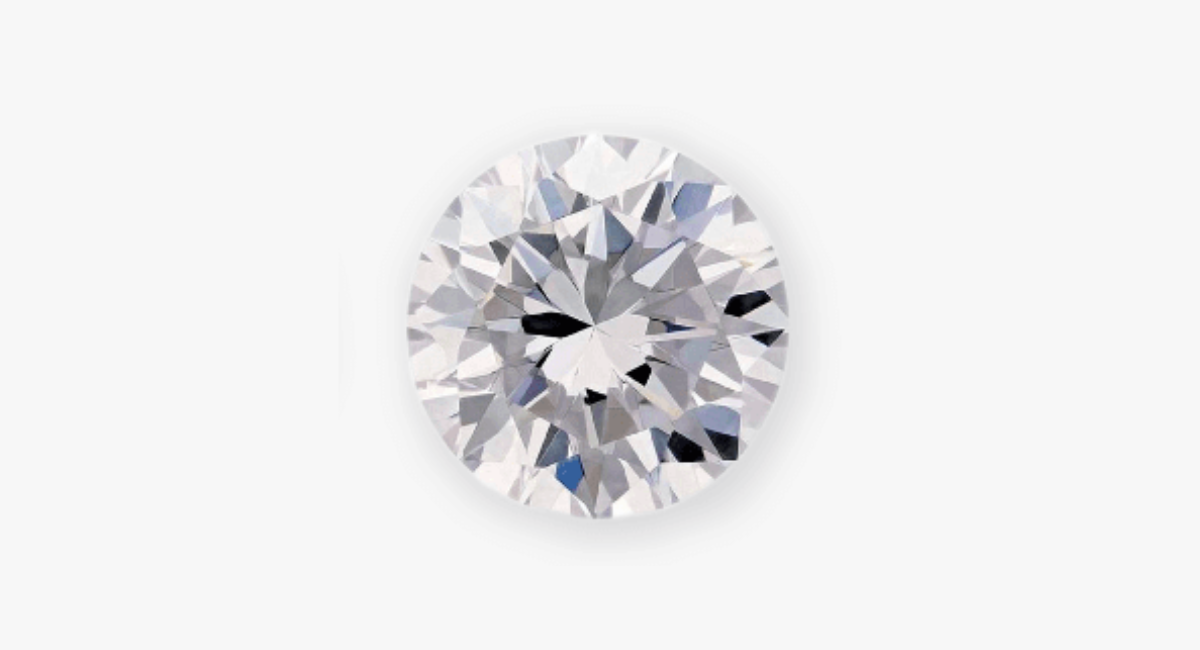
These are the cheapest diamond simulants that are generated from reacting zirconium dioxide. This simulant has a resemblance to diamond crystals but is not long-lasting.
Diamond Nexus Simulants: Diamond Nexus Simulants offer superior durability compared to Cubic Zirconia simulants, boasting a triple lifespan due to their robust nature. These simulants are composed of a blend of carbon and other substances, making them a preferred choice for many.
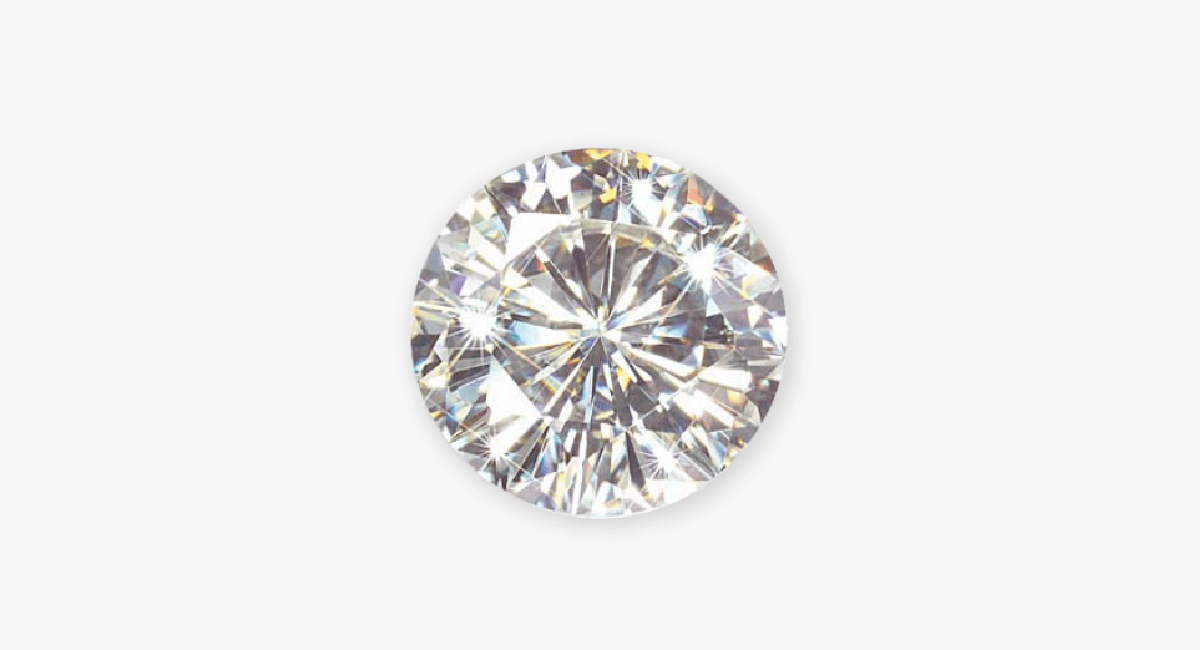
With better durability than Cubic Zirconia simulants, and a triple life expectancy due to their sturdy nature. Diamond Nexus simulants are preferred more. These simulants are made from a mixture of carbon and other substances.
Moissanite Gemstones: Moissanite Gemstones represent the third category of simulant diamonds. These gemstones are created through a laboratory-grown process and exhibit remarkable brilliance and hardness, similar to natural diamonds.
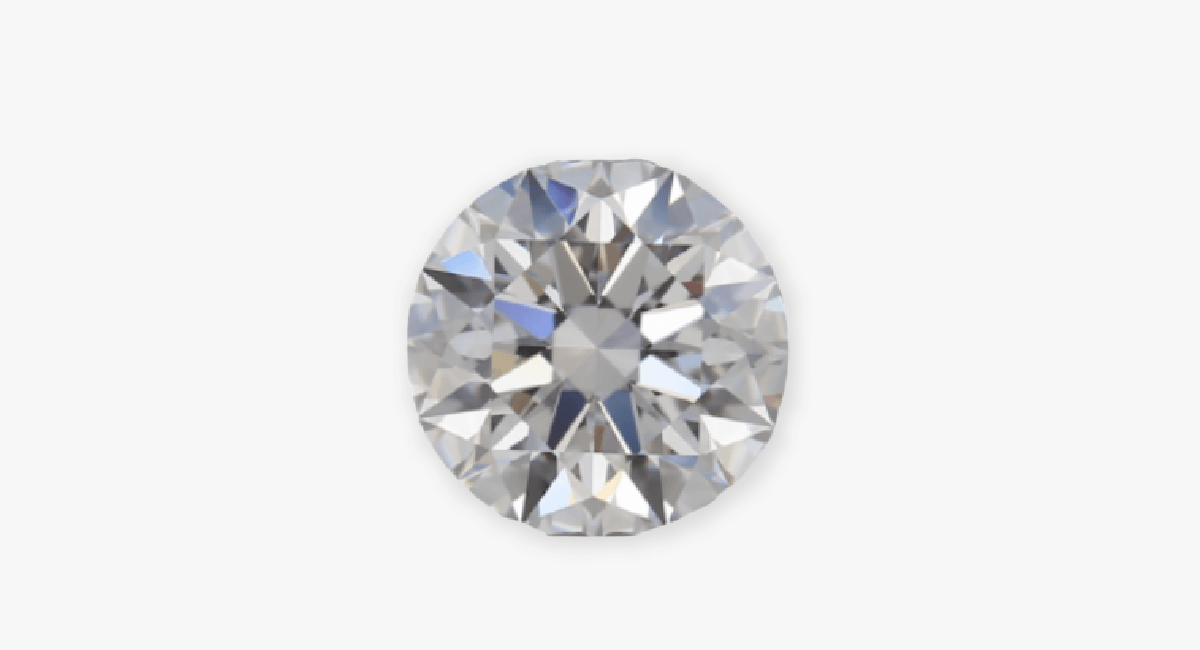
2. Cultured Diamonds
Cultured diamonds can be categorized into two primary types of lab grown diamonds:
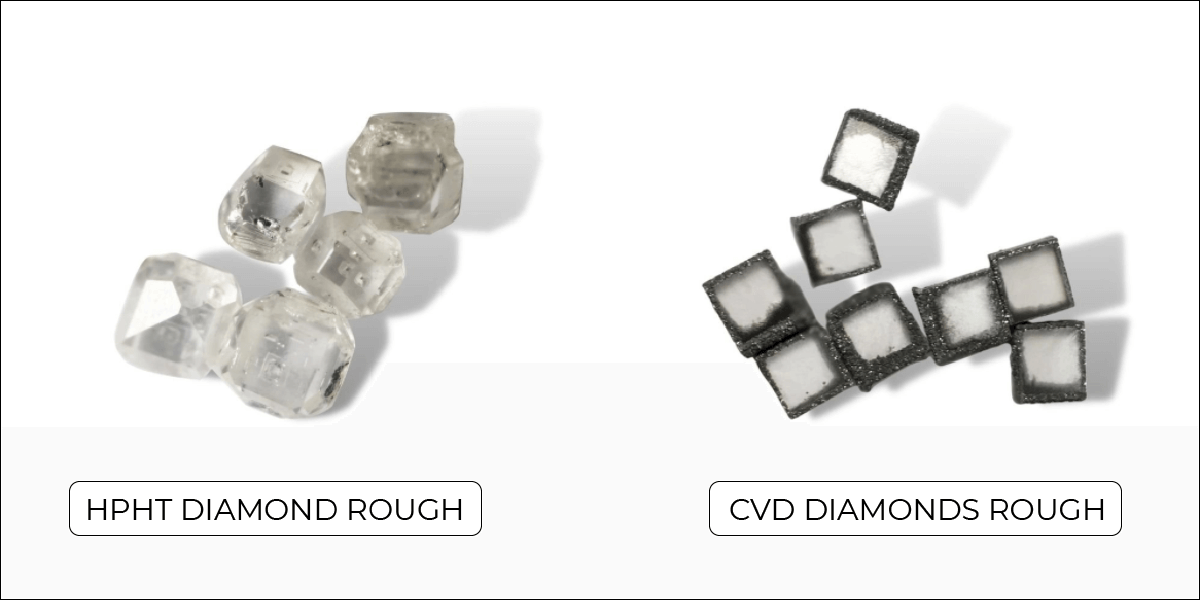
HPHT Synthetic Diamond
HPHT Synthetic Diamonds are those diamonds that have been created under ‘High Pressure and High Temperature’. These are the identical conditions necessary for the formation of a natural diamond from scratch. Man-made diamonds produced through the HPHT method exhibit equivalent optical, physical, and chemical properties as natural diamonds.
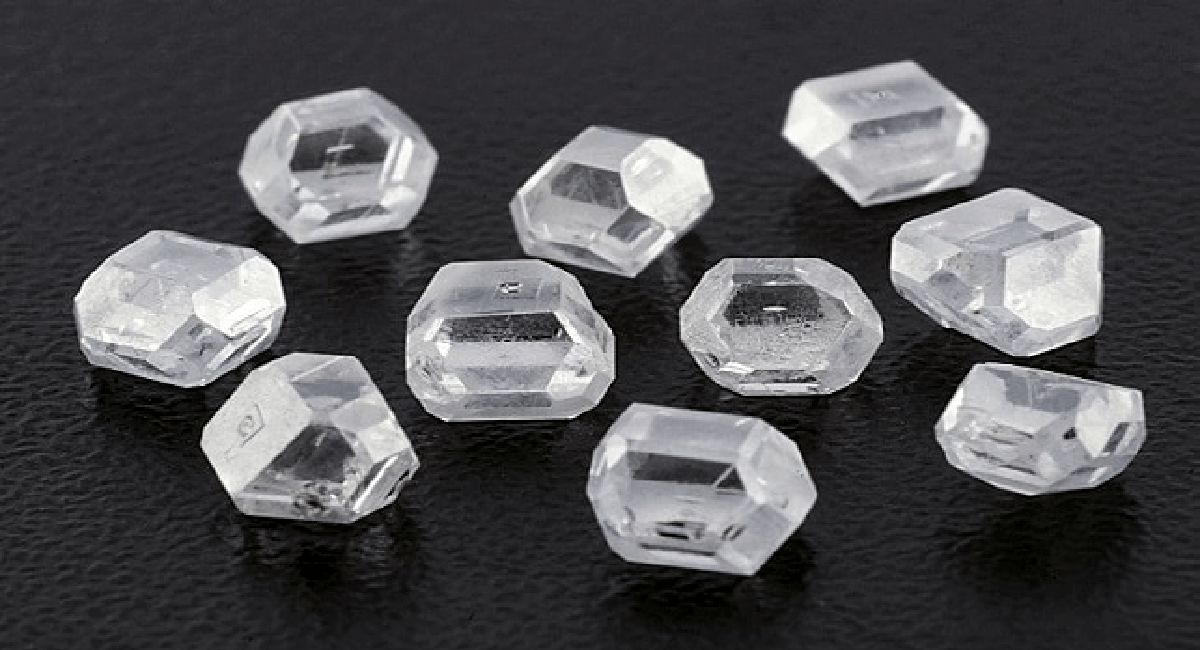
To apply high pressure and high-temperature different press machines are used.
There are three major types of press designs that are used to produce HPHT synthetic diamonds. These are the belt press, cubic press, and split-sphere press.
The man made diamond formed will be of the same quality, have the same chemical and physical properties, irrespective of the type of press design you choose.
The diamond seed is placed beneath one of these press machines, and by applying the precise combination of high pressure, high temperature, and the correct amount of carbon, a flawless HPHT synthetic diamond is created.
And to answer your question “are lab grown diamonds real?” Yes they are real, their origin is just different. We will explain in more detail ahead.
CVD Diamonds
CVD diamonds, short for Chemical Vapor Decomposition diamonds, are produced using a method that involves generating a carbon plasma over a substrate by utilizing a hydrocarbon gas mixture.
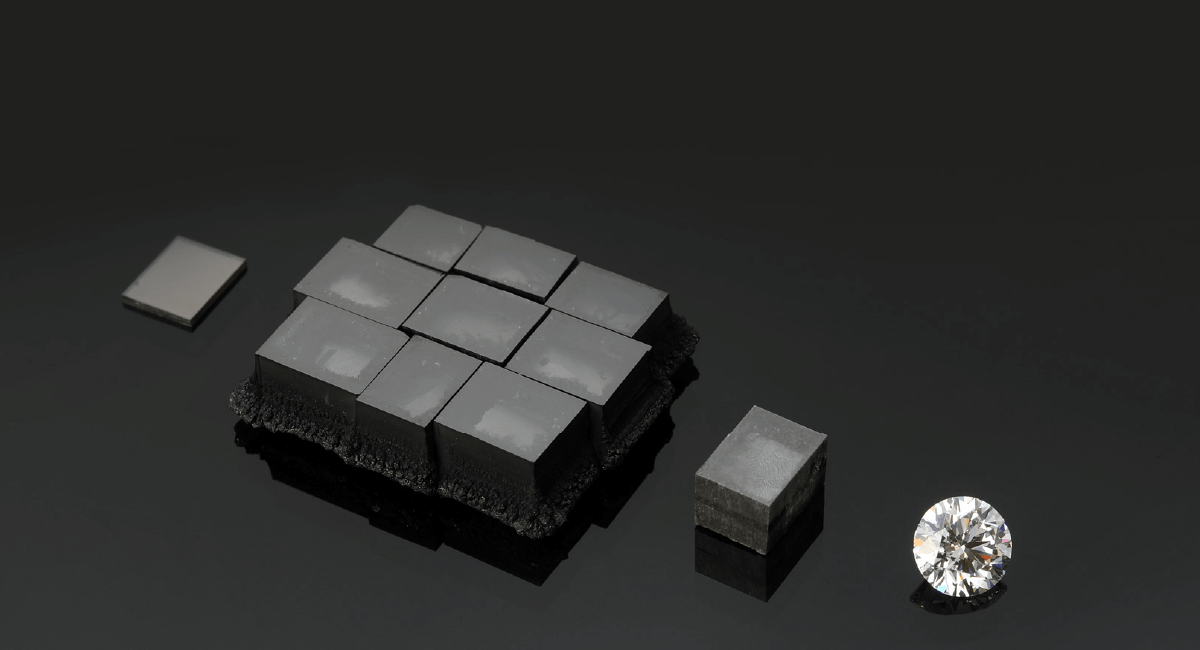
This plasma serves as the source of carbon atoms, which are deposited to create synthetic diamonds. The hydrocarbon gas mixture plays a crucial role in supplying the necessary carbon atoms for the production of both loose diamonds and fancy diamonds through this method.
Additionally, the CVD diamond-making process allows for precise control over chemical impurities.
While the HPHT synthetic diamond method is commonly favored for mass-producing man-made and fancy diamonds, the CVD diamond-making method is highly esteemed for its versatile industrial applications.
It offers simplicity and adaptability, allowing for the production of various outputs, including fancy diamonds, colored diamonds, loose diamonds, and white diamonds.
The diamonds created using the CVD diamond-making method maintain physical, chemical, and optical properties that closely align with those of natural diamonds.
Meaning that even after being fabricated in a lab-based environment, these loose diamonds which were created, will still be of the same quality and possess the same characteristics as that of natural diamonds.
For a comprehensive guide on diamond sizes and measurements, explore our informative “Diamond size chart” available on our dedicated page.
Are Lab Grown Diamonds Real?
Yes, lab grown diamonds are indeed real diamonds. They share the same chemical composition, physical properties, and optical characteristics as natural diamonds.
The primary difference lies in their origin. While natural diamonds are formed deep within the Earth’s mantle over millions of years, lab-grown diamonds are created in controlled laboratory environments through processes that replicate the natural diamond-growing conditions.
This distinction aside, lab grown diamonds are considered genuine and are virtually indistinguishable from their mined counterparts, making them a sustainable and ethical alternative in the diamond market.
Why Lab Grown Diamonds?
Lab grown diamonds offer several compelling advantages over mined diamonds.
Firstly, they are ethically and environmentally responsible, as their production is entirely mining-free, reducing the ecological impact associated with diamond mining.
Secondly, the quality of lab grown diamonds is exceptional, with consistent clarity and color, making them an attractive choice for those seeking top-tier gemstones.
Additionally, the valuation of lab grown diamonds is transparent and often more favorable, providing consumers with excellent value for their investment, while also contributing to a more sustainable and ethical diamond industry.
All in all, making lab grown diamonds a good purchase.

Mining Free
“NO MINING” is required for Lab created diamonds. Elevate your jewelry with mining free Lab Growm Diamonds
Quality
Lab created diamonds have the same
quality and optical properties as natural diamonds.
Valuation
Lab-created diamonds contribute excellent value,
and are more affordable than natural diamonds
Where to Buy Lab Grown Diamonds?
You can purchase lab grown diamonds from reputable jewelers, online retailers, or directly from manufacturers. For special requests or custom shapes not in our inventory, contact us at Loose Grown Diamonds, and don’t forget to ask about our promo codes for additional savings.
Conclusion
In summary, there are basically two types of man-made diamonds that have the same chemical, physical, and optical properties similar to that of natural diamonds. These two types are created by the ‘CVD diamond’ making method and the ‘HPHT Synthetic Diamond’ making method. While a diamond simulant may closely resemble a natural diamond in appearance, it differs significantly in terms of quality, durability, optical characteristics, and composition.
FAQs
What are lab grown diamonds called?
Lab grown diamonds are often referred to as lab diamonds, lab grown diamonds, or lab created diamonds.
How much do lab grown diamonds cost?
The cost of lab grown diamonds varies, but they are generally more affordable than natural diamonds. They cost around 40% less than natural diamonds having the same properties.
How is this different from diamond simulants and synthetics?
Lab grown diamonds differ from diamond simulants and synthetics in terms of their origin and properties. Lab grown diamonds are real diamonds
Do lab produced diamonds have resale value?
Lab-produced diamonds can have resale value, but it depends on factors like quality and market demand. However, the resale value will be 30% less than the original value.
Are lab created diamonds eco-friendly?
Yes, lab created diamonds are considered more eco-friendly than mined diamonds due to their reduced environmental impact.


